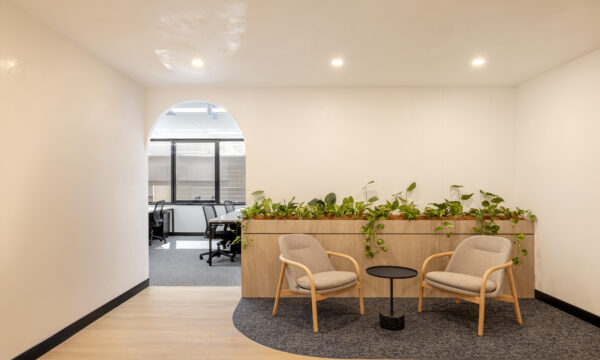
If you require office space for lease, take the time answer these 5 key questions to refine your brief as much as possible before you begin your search.
If you require office space for lease, take the time to refine your brief as much as possible before you begin your search. This will ensure you are viewing spaces that are most aligned with your current and future requirements.
The key questions to consider before starting your search are as follows:
1. What are my ‘real’ space requirements?
It is very important to understand, as accurately as possible, what size space you require, as this can have a major impact on the budget necessary to allocate.
Office fit out designs have changed significantly in recent years, with many businesses preferring very dense, largely open-plan layouts, often designed to accommodate approximately 1 person per 10m2 or 1:11m2, sometimes less.
Below is a list of key questions that would be beneficial to reflect upon for your own business.
- 1. How many workstations do you require?
- 2. How many enclosed offices (if any) do you require?
- 3. How many meeting rooms do you require?
- 4. Do you have a rough budget (as a guide)?
- 5. Do you have a preferred location?
- 6. When do you need to be in occupation of a new space?
- 7. Do you have any special requirements that need to be satisfied?
The more answers you have, prior to commencing your search, the more accurate the leasing agent can be with their identification of suitable offices to shortlist for inspections.
At Caden Office Leasing we have created a gallery of mock office fit out plans, covering spaces of all sizes. We use this document to offer prospective tenants visual examples of suites that could be built, in order to gather feedback on their preferences of size and design. In doing this, we find that we are able to further refine the brief before we formulate an initial list of properties/tenancies for consideration.
We also have a unique resource in the form of our Office Space Calculator.
Insert your requirements into the tool and it will provide an ‘estimate’ as to the size of space that your business requires.
2. Do you have an accurate budget?
As mentioned above, the space you are able to lease will be significantly influenced by your budget. Therefore, if you are searching for tenancies that are larger than your ‘real’ space requirements, the costs will also be higher than necessary which will be an inaccurate reflection of what you can actually lease.
Starting your search prematurely with the wrong brief may lead to complications from the get-go, as your budget and requirements will most likely not align. For example, you may believe that you need to focus on buildings/tenancies that are lower in quality than you would prefer, or alternatively, you may believe that you need to focus on buildings that are outside of your preferred locational parameters when actually neither of these are things are true.
An accurate brief will help you not only secure a space that is correctly sized for your business but also ensure you do not have to compromise on quality. An experienced agent will give you an accurate budget recommendation, staying within your means, once your requirement is realised. This should ensure that you are being presented with the very best spaces for lease within what you can afford. Indeed, with the right questions answered upfront, quite often prospective tenants can find space that exceeds their expectations at a lower price-point than they had originally anticipated.
In addition to the rent, it is important that businesses understand all of the associated costs such as cleaning, after-hours air conditioning costs, electricity costs etc. Please click on this link here for further information on outgoing costs of a commercial office lease.
3. When do you need to move?
Office Leasing Market conditions will often dictate how far in advance (of a space becoming vacant) a landlord will commit to taking on a new lease.
If vacancy rates are high and the market is more favourable for prospective tenants (meaning there are surplus office spaces), building owners may be amenable to committing to a new lease as soon as they know they have a space becoming vacant. Depending upon the size of the space this could be as long as 6 – 12 months prior to the tenant requiring physical occupation.
If vacancy rates are lower, (meaning there are a surplus of tenants and not as much office space to choose from), building owners may prefer to wait before committing a tenant, particularly if rents are rising. This can be very frustrating for a prospective tenant particularly if they go through the search process and identify a space that they wish to commit to.
You can start looking for office space within the closer months leading up to your expiry or even 12 months or more in advance. There will always be options for you to consider regardless of when you begin your office leasing search, however for custom fit outs, the further in advance the better.
Check with an agent what the likely timeframes are, as they depend on each building individually.
4. What Lease Term can you commit to?
The length of time for which a business can commit to a proposed lease (Lease Term) can have a significant impact on the amount and type/s of tenancies available to them.
Some landlords may be more aggressive in their pursuit of tenants that are prepared to commit to longer lease terms, i.e 5 yrs or greater, in comparison to tenants seeking a shorter-term lease. If a shorter lease term is a definite requirement for you, however, communicate this to your agent before the search commences. If you are undecided, ask the agent to provide a detailed list of all available options so you can see the difference in the number of tenancies available within your lease term preference.
It is important to note that a shorter lease term may mean the search is more concentrated on tenancies that have existing fit out in situ. Longer leases may allow for the construction of a new, purpose-built fit out. Building owners may also be more aggressive in their financial offerings (incentives) for longer leases so it is important that the differences are explained in advance.
5. Existing or New Fit out?
It is really important for an incoming tenant to understand the differences between spaces that already have a fit out in situ as opposed to spaces that require a new fit out and how these differences affect the lease.
In order to understand more about the various fit out options please click here.
This article explains the difference between the ‘existing’ fit outs, ‘spec’ fit out’ and ‘turn-key’ fit outs.
Each option has major implications on the financial parameters of a proposed lease. It is therefore important to consider what option is best for your business in the short and long term.
In a space that has an existing fit out often incentives can be largely put towards the rental abatement. However, at this time within the market, tenancies that require a full fit out generally come at a greater cost given the fit out needs to be funded by the landlord as part of the deal. There are a number of variances that need to be discussed with either option. Making the choice between the types of fit outs really depend on your requirement, the office and the position of the landlord.
In summary, there are a variety of key considerations when putting together an office space brief. In addition to the questions, we have highlighted above you may also wish to give consideration to such things as your preferred location and car parking requirements. The more information that can be provided upfront, the greater the level accuracy an agent will have in identifying the right tenancies to match your requirements.


